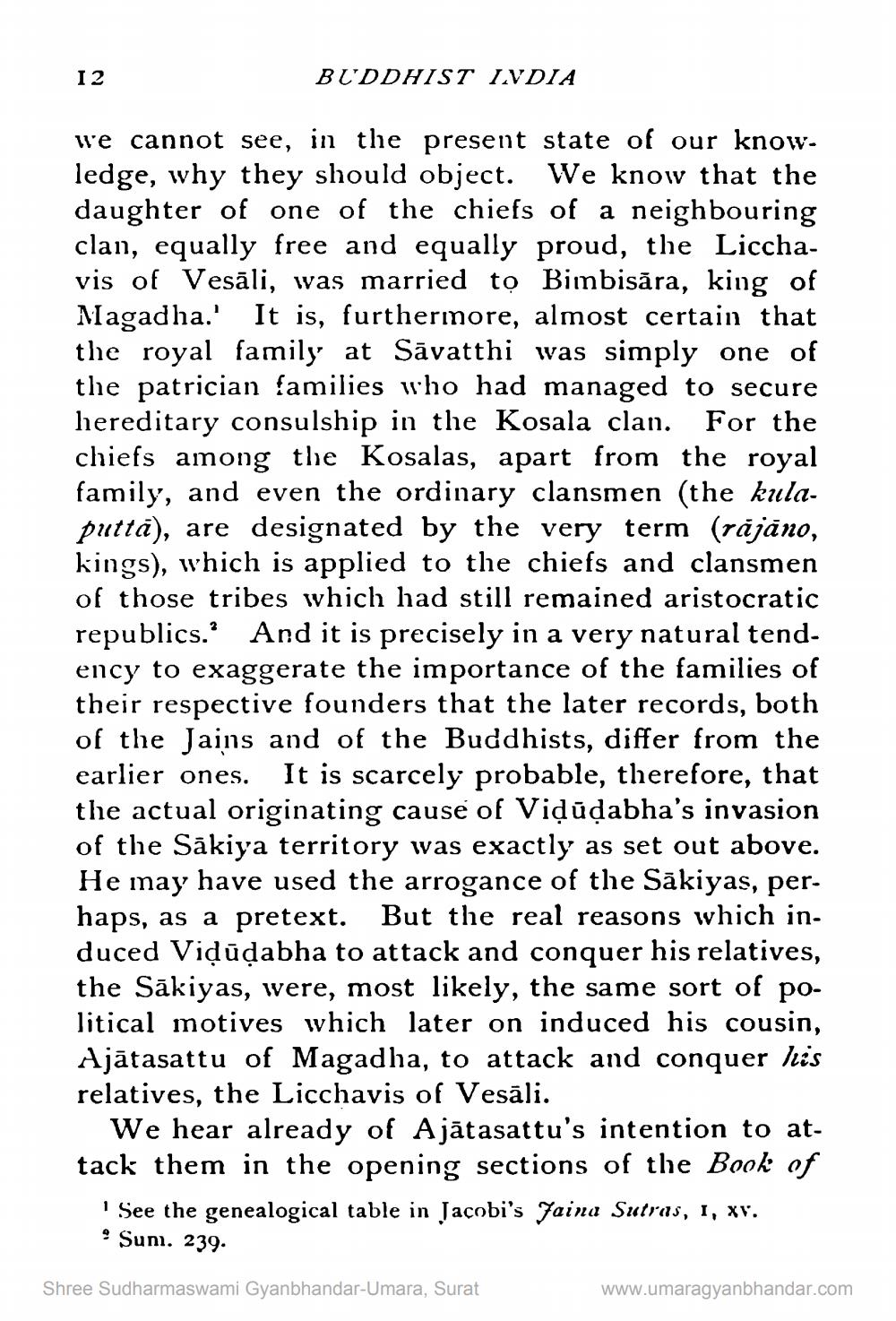________________
I2
BUDDHIST IVDIA
we cannot see, in the present state of our knowledge, why they should object. We know that the daughter of one of the chiefs of a neighbouring clan, equally free and equally proud, the Licchavis of Vesāli, was married to Bimbisăra, king of Magadha. It is, furtherinore, almost certain that the royal family at Sāvatthi was simply one of the patrician families who had managed to secure hereditary consulship in the Kosala clan. For the chiefs among the Kosalas, apart from the royal family, and even the ordinary clansmen (the kulaputtă), are designated by the very term (råjāno, kings), which is applied to the chiefs and clansmen of those tribes which had still remained aristocratic republics. And it is precisely in a very natural tend. ency to exaggerate the importance of the families of their respective founders that the later records, both of the Jains and of the Buddhists, differ from the earlier ones. It is scarcely probable, therefore, that the actual originating cause of Viļūdabha's invasion of the Sākiya territory was exactly as set out above. He may have used the arrogance of the Sākiyas, perhaps, as a pretext. But the real reasons which induced Viļūļabha to attack and conquer his relatives, the Sākiyas, were, most likely, the same sort of political motives which later on induced his cousin, Ajātasattu of Magadha, to attack and conquer his relatives, the Licchavis of Vesāli.
We hear already of Ajātasattu's intention to attack them in the opening sections of the Book of
See the genealogical table in Jacobi's Faina Sutras, 1, xv. . Sum. 239.
Shree Sudharmaswami Gyanbhandar-Umara, Surat
www.umaragyanbhandar.com




